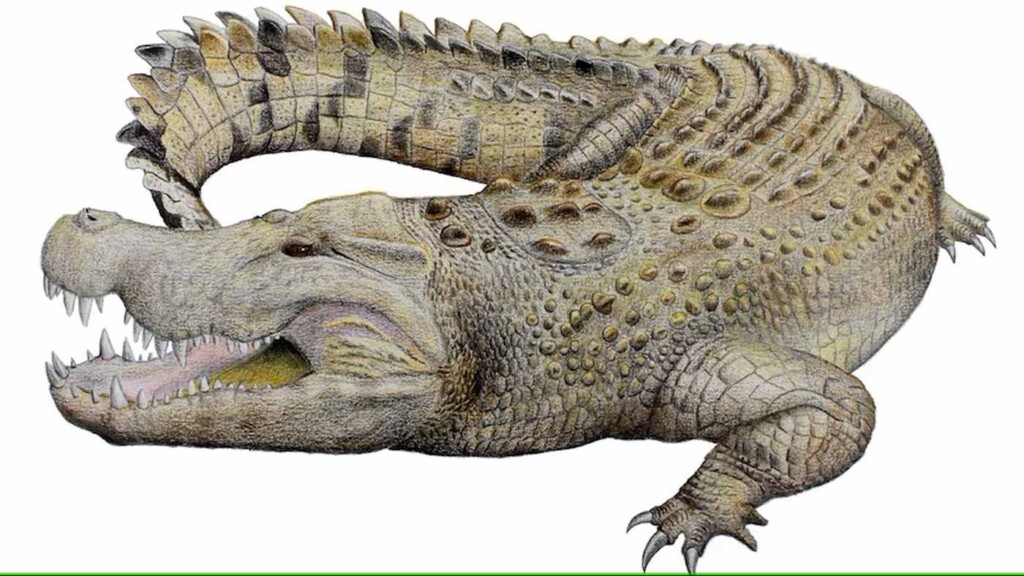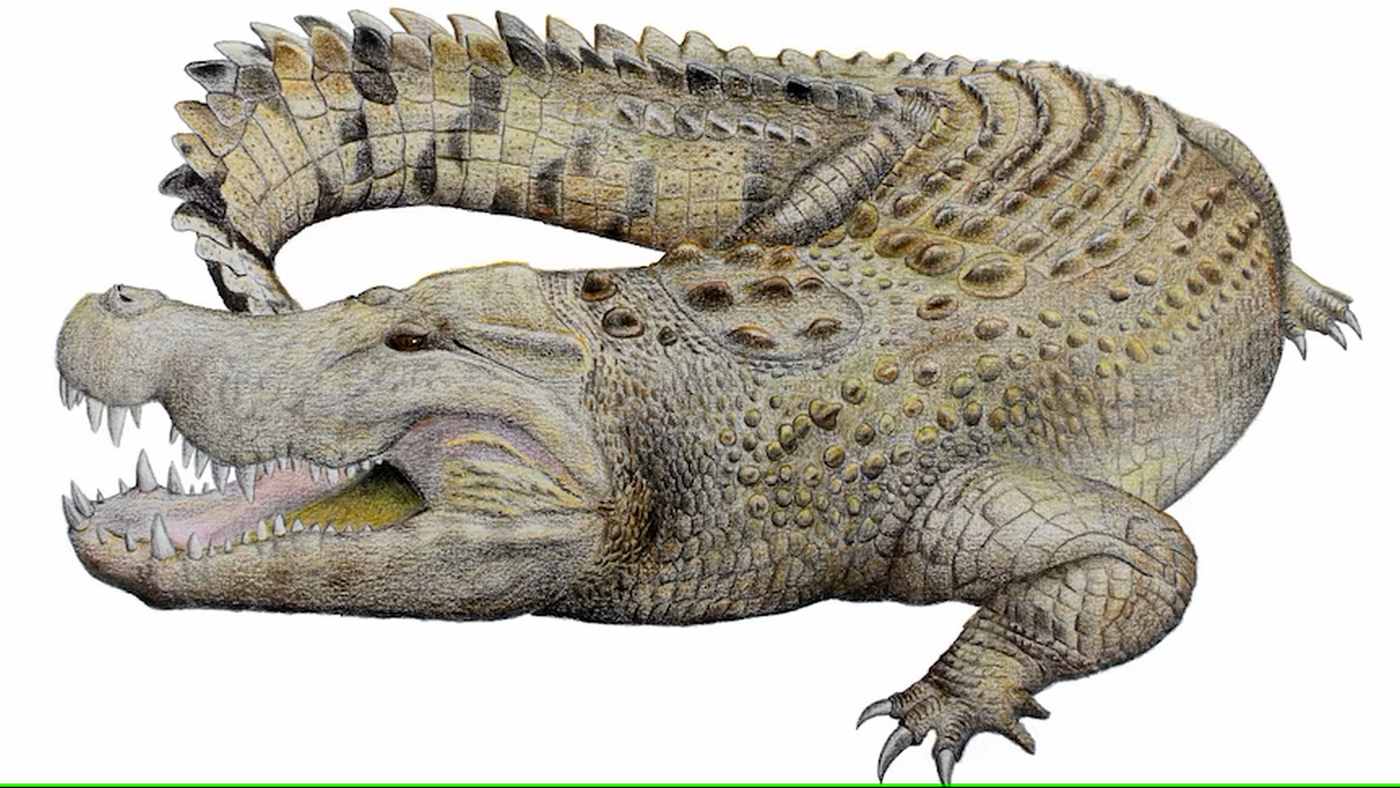
While Australia’s saltwater crocodiles are famous for sporting an evolutionary design that hasn’t changed in tens of millions of years, a newly discovered species of extinct crocodilian is teaching scientists Down Under just how ferocious they once were.
Baru iylwenpeny is a newly discovered species of “cleaver-headed” crocodile from Australia’s Northern Territory that roamed the now-arid landscape around 8 million years ago.
Found in 2009 at the Alcoota fossil bed, an exquisitely preserved skull of this animal was recently examined by biologists at the Museum and Art Gallery of the Northern Territory, and found to be the third new species in this extinct genus of reptile.
Baru crocodiles were the original crocodilian species in Australia, and they evolved there starting around 25 million years ago. The saltwater crocodiles wrastled by the “Crocodile Hunter” Steve Irwin, which became a symbol of Australia during the years of his smash hit TV show, actually evolved in Africa and arrived on the Australian continent much more recently.
By contrast, the Baru crocs lived in a much lusher and wetter environment and evolved to take prey differently.
Today’s saltwater crocs are fast ambush predators that eat a lot of small fish, or take terrestrial animals that stray close to the water, drowning them.
DISCOVERIES FROM PALEO-AUSTRALIA: Newly Discovered Rock Art Panels Depict How Ancient Ancestors Envisioned Creation and Adapted to Change
The Baru crocs evolved extremely robust skeletal structures, broader mouths, and denser skulls. With dorsally oriented nostrils and eyes, a poor range of head movement, and fossils found in riverine conditions, it’s believed they hunted mostly megafauna as semi-aquatic ambush predators.
“The main difference between [Baru iylwenpeny] and the other older Barus is that it has bigger back teeth,” said earth science curator at the Museum and Art Gallery of the Northern Territory, Dr. Adam Yates. “All of these adaptations are pretty much giving it a bigger, stronger bite,” he said.
MORE WICKED FOSSILS: One of the Largest ‘Sea Dragon’ Fossils Ever Found in Britain Unearthed As a Complete Ichthyosaur
The wider mouth also meant that this species had room for another one of its extra large teeth, and Yates believes it would have pretty much eaten “whatever it wanted.”
As Australia heated up, and riverine environments shrank, the animal as well as all its forbearer species went extinct during the middle of the Miocene Epoch—around 25 million to 5 million years ago.
WATCH a great examination and explanation by Dr. Yates…
SHARE This Great Beast With Your Friends Who Love A Good Science Story…




















